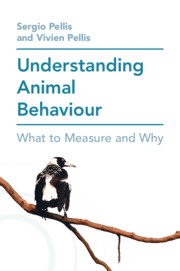Book contents
- Frontmatter
- Contents
- Preface
- Acknowledgements
- 1 What Is the Problem and What Is the Solution?
- 2 Behaviour as a Means, Not an End
- 3 The Deep Structure of Behaviour
- 4 The Brain Is Not Alone
- 5 Bringing It All Together: Steps in the Descriptive Process
- 6 What of the Future?
- Epilogue
- Appendix A: Eshkol-Wachman Movement Notation and Descriptive Analysis
- Appendix B: Practice, Practice, Practice
- References
- Index
5 - Bringing It All Together: Steps in the Descriptive Process
Published online by Cambridge University Press: 11 May 2021
- Frontmatter
- Contents
- Preface
- Acknowledgements
- 1 What Is the Problem and What Is the Solution?
- 2 Behaviour as a Means, Not an End
- 3 The Deep Structure of Behaviour
- 4 The Brain Is Not Alone
- 5 Bringing It All Together: Steps in the Descriptive Process
- 6 What of the Future?
- Epilogue
- Appendix A: Eshkol-Wachman Movement Notation and Descriptive Analysis
- Appendix B: Practice, Practice, Practice
- References
- Index
Summary
Play fighting in rats is used to show how the four principles can be used to characterise the organisation of the behaviour and then select behavioural markers that can be scored numerically. The partners compete to access the nape of each other’s neck and the behaviour patterns used during these encounters are derived from adult sexual encounters. Body size and agility can affect which tactics are used as can the location in the enclosure in which an encounter takes place. Taking these factors into account reveals that some actions cannot be explained as being compensatory to either gaining or avoiding nape contact. This, in turn, reveals novel aspects of organisation of play fighting and leads to identifying novel behavioural markers to measure those aspects of organisation.
- Type
- Chapter
- Information
- Understanding Animal BehaviourWhat to Measure and Why, pp. 75 - 97Publisher: Cambridge University PressPrint publication year: 2021

